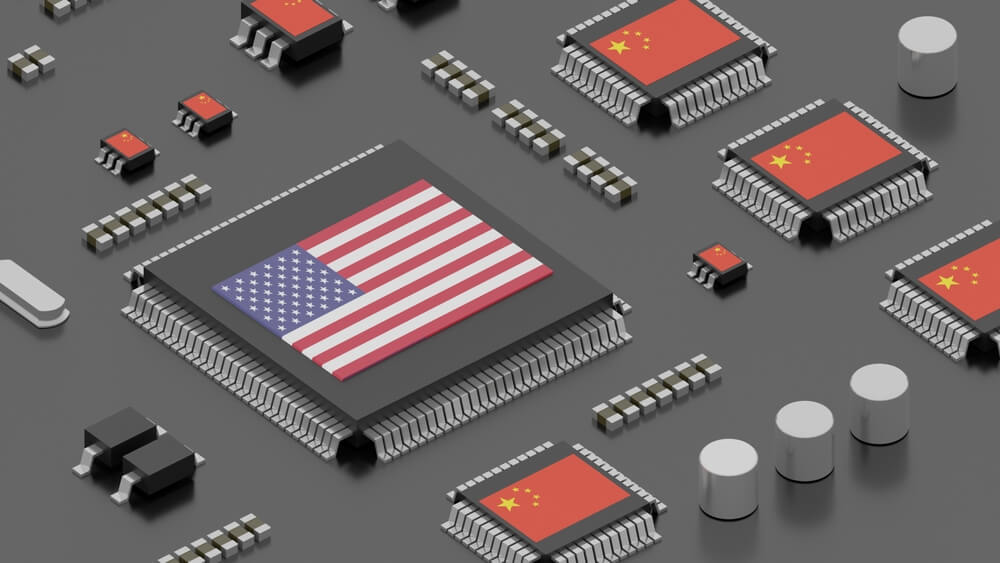News of exploding pagers and walkie talkies in faraway places may feel like a threat confined to armed conflicts that have been raging for decades. But as several major news organizations have reported, the delivery system for the strike appears to be a compromised and weaponized supply chain.
In the pager operation, there were multiple stops across several continents where the bill of materials got fuzzy, and the products became vulnerable to tampering. While Americans may feel immune to this particular danger, others lurk in the microelectronics that power personal devices, national defense and critical infrastructure systems we depend on for modern life.
Beyond pagers and walkie talkies, Chinese-made cranes used in major U.S. ports have the ability to “phone home” and are potentially embedded with “kill switches” in the microelectronics that power them. Compromised microelectronics originating in China or other locations thousands of miles away could also affect air traffic control, the energy grid, 5G networks, banking, medical devices and a host of other critical infrastructure systems.
China makes no secret of their goal to dominate the worldwide microelectronics industry and has made steady progress over decades through low-cost labor, massive subsidies and theft of our intellectual property. FBI Director Christopher Wray stated in April that China is developing the “ability to physically wreak havoc on our critical infrastructure at a time of its choosing.”
The U.S. government has been slow to react to this imbalance, but there are hopeful signs. For example, the fiscal year 2021 and 2022 National Defense Authorization Acts instructed the Department of Defense (DoD) to develop a plan to remove dual-use and commercial components from China, Russia, Iran and North Korea by 2027. That’s just the plan, not implementation. The entire defense industrial base is gearing up to activate in a big way once the DoD makes its plan available.
It will take years to purge the myriad military systems containing content from our adversaries. In the meantime, we remain at risk for a catastrophic event that could disrupt military operations and cripple critical infrastructure. While the DoD is activating to scrub its systems, there currently is no legislation or policy established to get Chinese content out of U.S. critical infrastructure systems.
CHIPS Act won’t fix the problem
Twenty years too late, the nation woke up to the domestic semiconductor shortage, and Congress spent four years creating the Creating Helpful Incentives to Produce Semiconductors (CHIPS) for America Fund signed into law in 2022. Hundreds of billions of dollars in private investment followed government action. The impetus for the CHIPS Act was our dwindling share of the world supply of semiconductors, now at 13 percent. Unfortunately, the legislation addresses only one-third of the technology stack. Each chip sits on a printed circuit board (PCB) and integrated circuit substrate. All three layers comprise the “technology stack” that makes everything from F-150s to F-35s possible.
The U.S. currently makes only 4 percent of the world’s PCBs and less than one percent of the global supply of integrated circuit substrates. This means most of the chips being made in the new fabrication facilities in the U.S. will be shipped to Asia and packaged with Asian-made PCBs and substrates because we don’t make enough here.
A blueprint to bulletproof U.S. microelectronics
Without strong government action, China will continue to have the upper hand, and we will continue to be vulnerable to the very real possibility of tampering that could damage both our national security and economic security.
We need to reinvigorate the American PCB and substrate industry with government and private investment. And we can do this if Congress passes the Protecting Printed Circuit Boards and Substrates (PCBS) Act, H.R. 3249. The measure will provide a 25 percent tax incentive for the purchase of American-made PCBs and funding for workforce development, facility expansion and research and development. Likewise, executive branch agencies must create policies that support the entire technology stack. If we do nothing, nothing changes.
We need to create a level playing field for American manufacturers, which have to compete with state-sponsored industries in China. Because companies can’t compete with countries.







